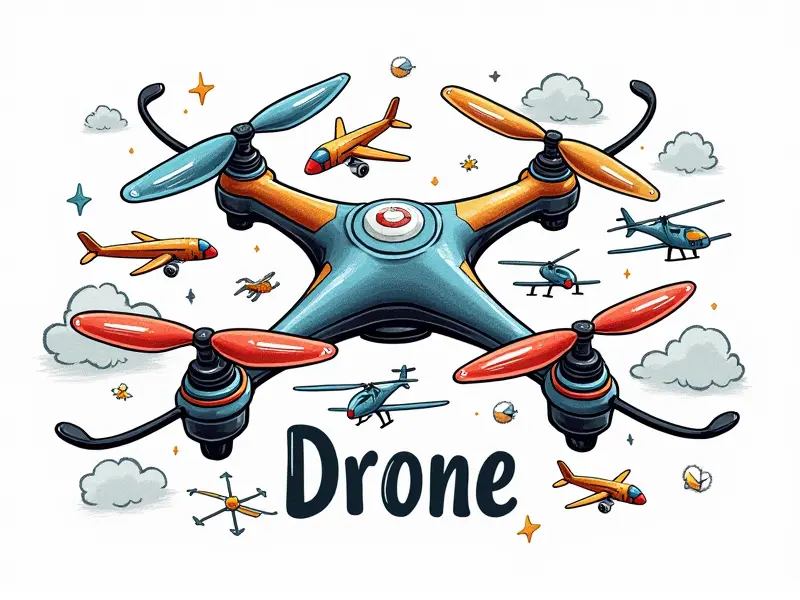FPV drone setup essentials

Top 5 Must-Have FPV Drone Accessories
When setting up your first FPV (First Person View) drone, there are several accessories that can significantly enhance the flying experience. Here are five must-have items to consider:
- Voice Alert Module: This device provides audio alerts for critical flight data such as battery voltage and distance from home.
- Battery Management System (BMS): A BMS ensures your batteries are charged safely, preventing overcharging or discharging which can damage the cells.
- FPV Camera: Choose a high-quality camera with wide-angle lenses for better visibility and smoother video transmission.
- Voltage Regulator (ESC): An efficient ESC helps maintain stable power supply to your motors, ensuring smooth flight performance.
- FPV Video Transmitter: A high-quality transmitter is crucial for clear video feed and long-range transmission.
Essential Gear for Your First FPV Setup
Getting started with FPV drones requires a range of gear to ensure you have the best possible experience. Here’s what every beginner should consider:
- FPV Goggles: Essential for viewing live video feed from your drone.
- Video Transmitter (VTX): Sends video signals to your goggles or receiver.
- Battery Charger: A reliable charger is crucial for maintaining battery health and performance.
- FPV Camera: The camera captures the live feed from your drone’s perspective.
- Antenna: Improves signal strength and range of your video transmission.
Best Antennas for Long-Range FPV Drones
Selecting the right antenna is crucial for achieving long-range FPV flights. Here are some top choices:
- Belt Antenna: Ideal for directional transmission, offering excellent range and clarity.
- Slimstick Antenna: Compact design with good range and flexibility in mounting options.
- Mushroom Antenna: Offers omnidirectional coverage and is easy to install on small drones.
Setting Up the Perfect FPV Goggles
FPV goggles are a critical component of your setup, providing an immersive flight experience. Here’s how to set them up properly:
- Connect VTX: Ensure your video transmitter is connected to the goggles.
- Adjust Display Settings: Fine-tune brightness and contrast for optimal visibility.
- Mounting: Securely mount the goggles on your helmet or headgear.
Choosing the Right FPV Video Transmitter
The video transmitter is a key component that determines the quality of your flight experience. Consider these factors when choosing one:
- Frequency Band: Choose between 5.8GHz and other bands based on local regulations.
- Power Output: Higher power output generally means better range but check legal limits.
- Compatibility: Ensure the transmitter is compatible with your drone’s camera and receiver.
Beginner's Guide to FPV Drone Batteries
Batteries are crucial for flight duration and performance. Here’s what beginners need to know:
- Type of Battery: Lithium-Polymer (LiPo) batteries are commonly used due to their high energy density.
- Capacity: Higher capacity means longer flight time but also heavier weight for the drone.
- C Rating: The C rating indicates how fast a battery can be charged and discharged safely.
Must-Know Components for FPV Racing Setup
For those interested in FPV racing, here are some essential components to consider:
- Racing Goggles: Designed specifically for high-speed flights with wide field of view.
- High-Speed Motors and Props: Necessary for achieving the speed needed in races.
- Battery Management System (BMS): Ensures safe charging and discharging of batteries during intense use.
Essential Tools for Building an FPV Drone
To build your own FPV drone, you’ll need a variety of tools:
- Soldering Iron: Essential for connecting components and wiring.
- Multimeter: Useful for testing electrical connections and battery voltage.
- Cutters: For trimming wires and cutting heat shrink tubing.
Quick Start Guide for FPV Drone Gear
Here’s a quick guide to get you started with your new FPV drone gear:
- Assemble the Frame: Attach motors, ESCs, and other components securely.
- Install Propellers: Ensure they are correctly oriented for forward flight.
- Connect Batteries: Charge your batteries before first use.
- Set Up Video Transmission: Connect the VTX to your camera and goggles.
FPV Goggles: A Comprehensive Buying Guide
Selecting FPV goggles can be overwhelming with so many options available. Here’s what you need to know:
- Battery Life: Look for goggles with long battery life.
- Field of View (FOV): A wider FOV provides better visibility during flights.
- Sensitivity Settings: Adjustable settings allow you to fine-tune the image quality.
Battery Tips for Optimal FPV Flight Time
To maximize your flight time, follow these battery tips:
- Charge Properly: Use a BMS charger and avoid overcharging or undercharging batteries.
- Select High-Capacity Batteries: Higher capacity means longer flight times but also heavier drones.
- Monitor Voltage: Keep an eye on battery voltage during flights to prevent sudden drops.
Conclusion
Setting up your FPV drone requires careful consideration of various components and accessories. From choosing the right video transmitter and antennas for long-range transmission, to selecting high-quality goggles and batteries for optimal performance, each piece plays a crucial role in enhancing your flying experience. By following these guidelines, you can ensure that your setup is both safe and enjoyable.

